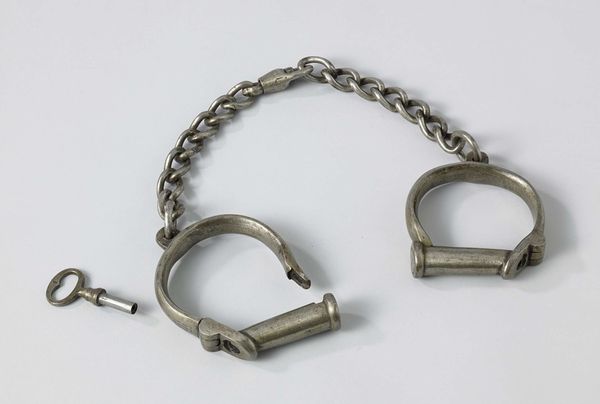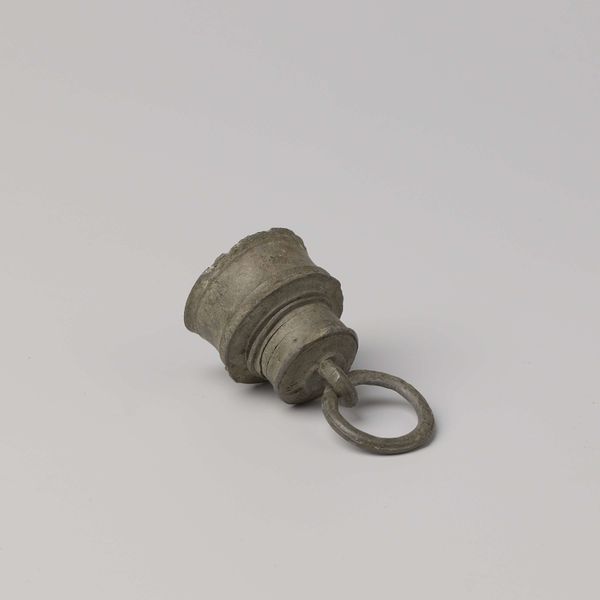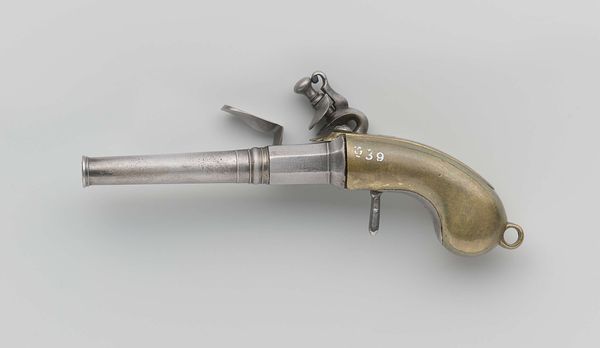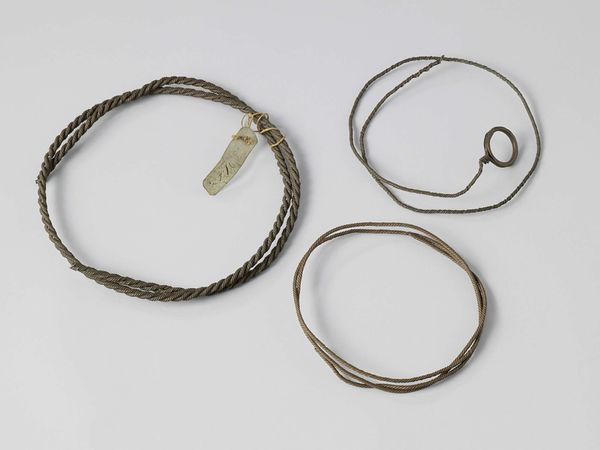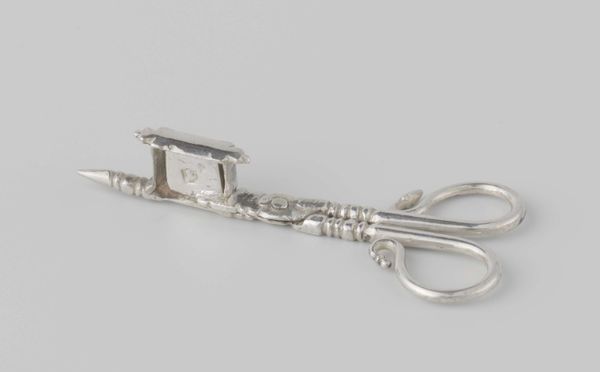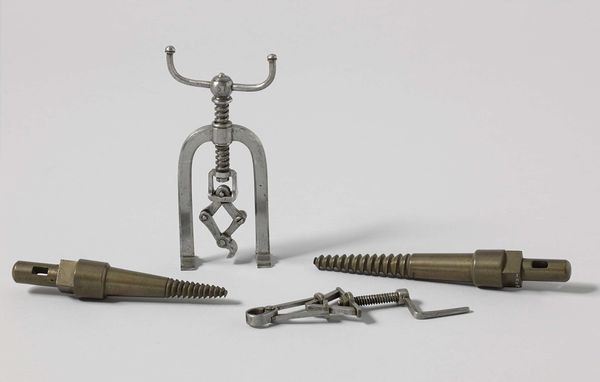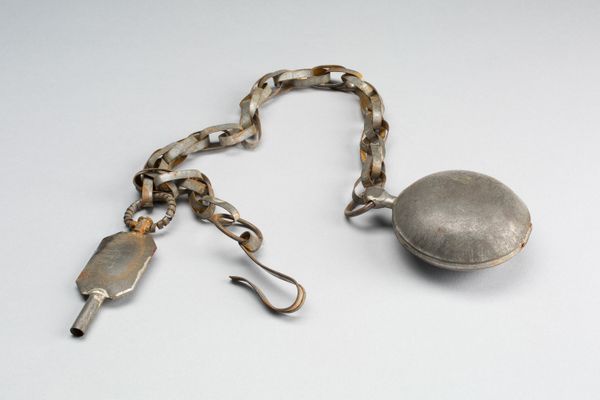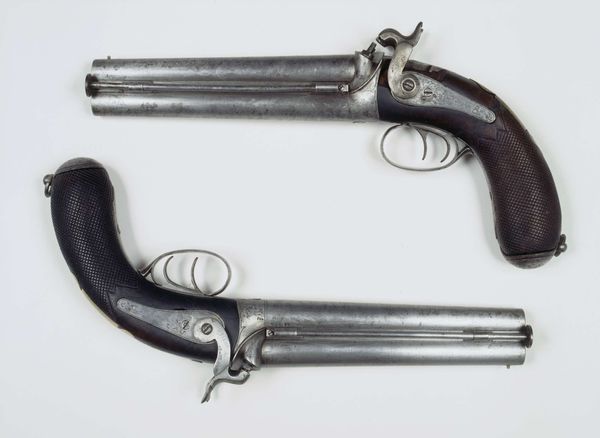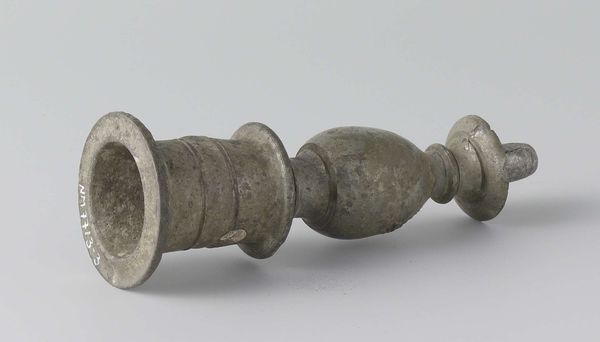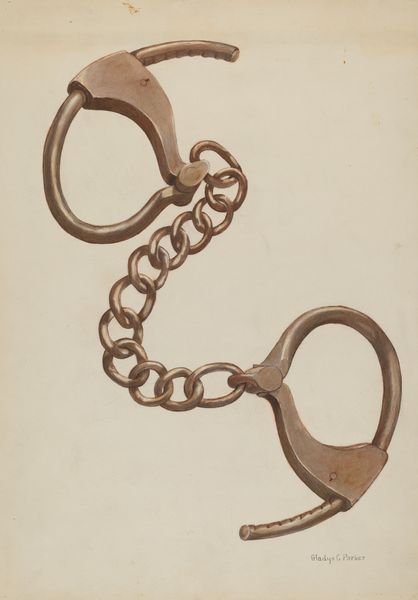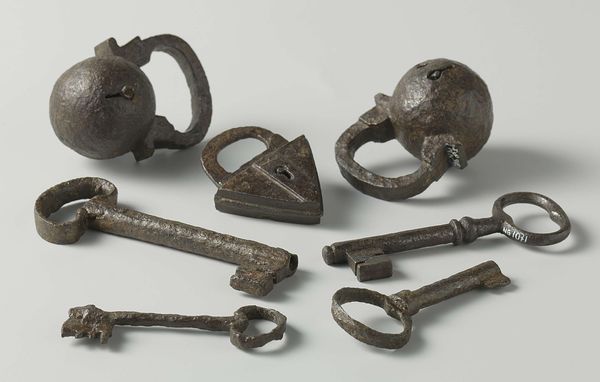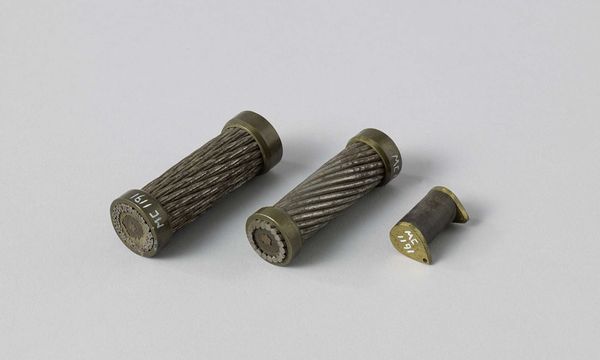
assemblage, metal, sculpture
#
assemblage
#
metal
#
sculpture
Copyright: Rijks Museum: Open Domain
Editor: We’re looking at a "Pair of Handcuffs," created sometime between 1860 and 1866, made from metal. It's unsettling to consider their intended use. What's striking is how cold and functional they appear. What can you tell us about these? Curator: Well, consider the metal itself, its fabrication, the very labor involved in shaping it into instruments of control. These handcuffs are not just objects; they are material evidence of social relations, power dynamics, and, potentially, industrial processes within the penal system or even the larger context of conflict during their manufacture. What story do you think their form is trying to convey? Editor: I suppose they show the relationship between authority and the incarcerated... a tangible expression of that imbalance. But isn't there an argument that functional items shouldn't necessarily be elevated as fine art, since their aesthetic properties may be unintentional? Curator: That very challenge is where a materialist lens becomes relevant. We move beyond considering beauty and start analyzing the materials, production process, and use as an active cultural dialogue. These restraints might tell us about period metallurgy or mass production of punitive objects. It begs the question: how did production respond to the demand for imprisonment? Editor: I see what you mean. The history is baked right into their very substance. It’s no longer about subjective taste, but social reality and manufacturing! Curator: Precisely! It shifts the narrative from mere observation to an analysis of the conditions that brought these objects into existence and the impact they have, socially, culturally, politically. Editor: I appreciate your materialist viewpoint on this, illuminating the handcuffs’ origins in material production, rather than its existence as a symbol alone. Curator: Exactly! Material speaks, if only we are trained to hear its story.
Comments
No comments
Be the first to comment and join the conversation on the ultimate creative platform.
